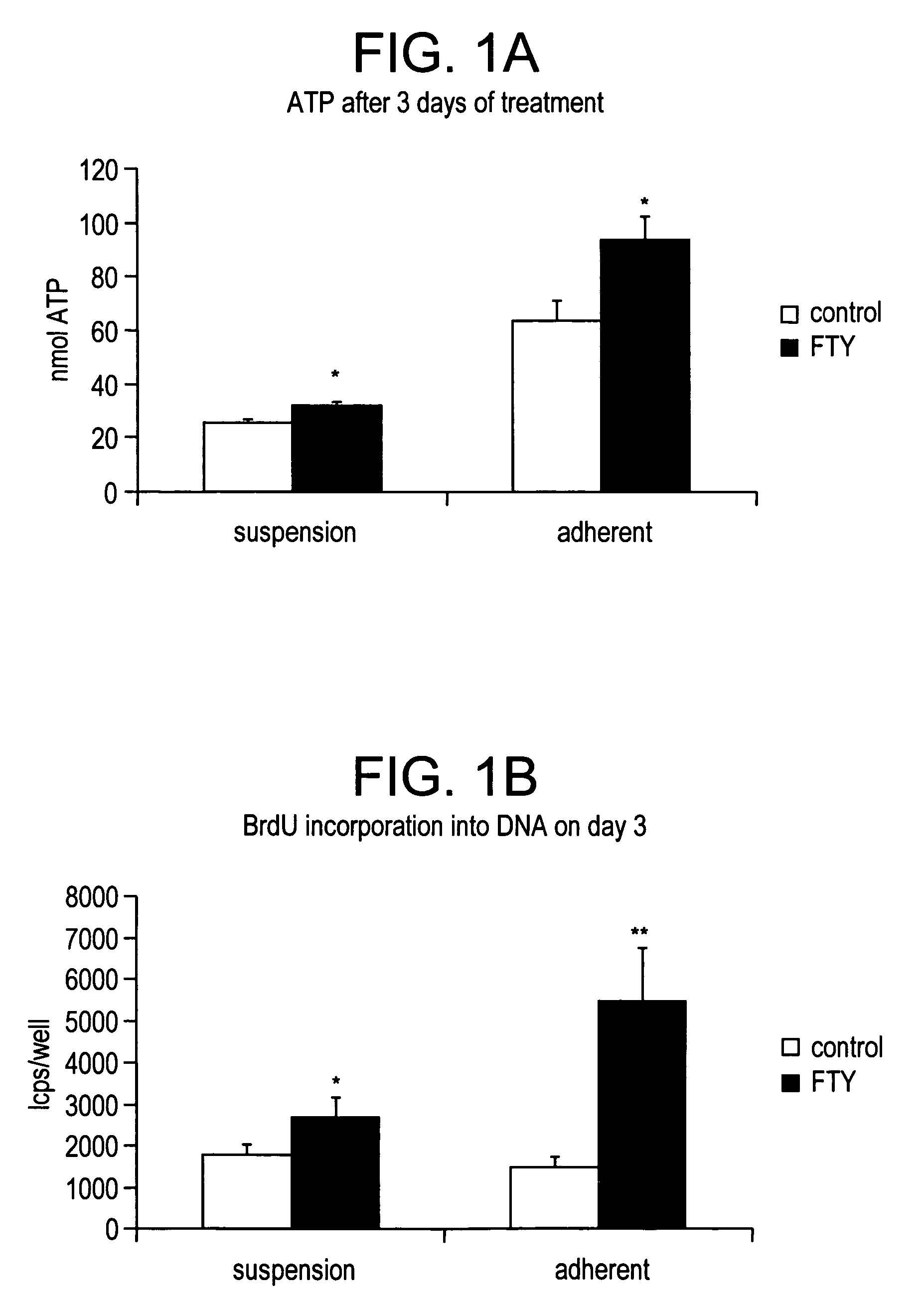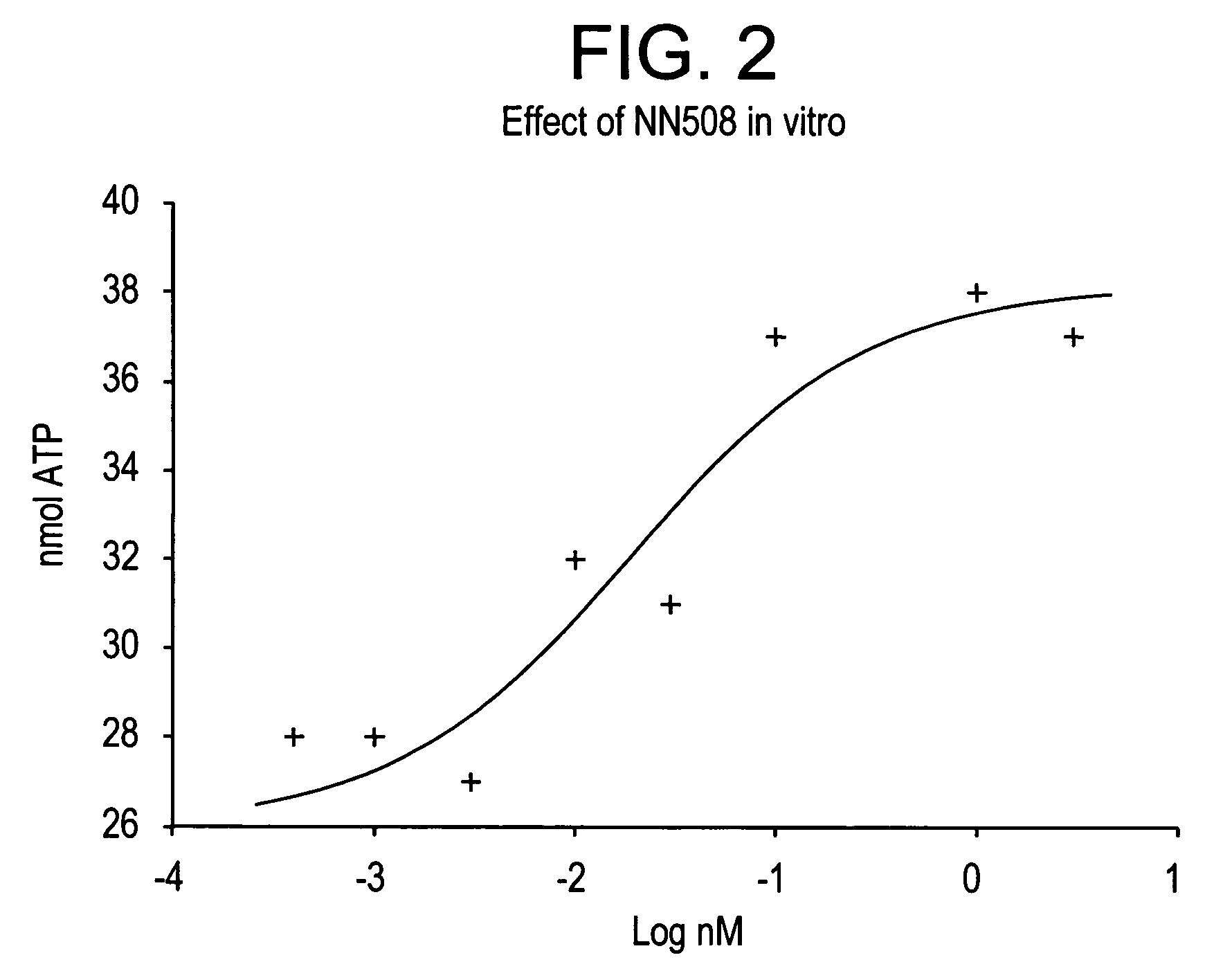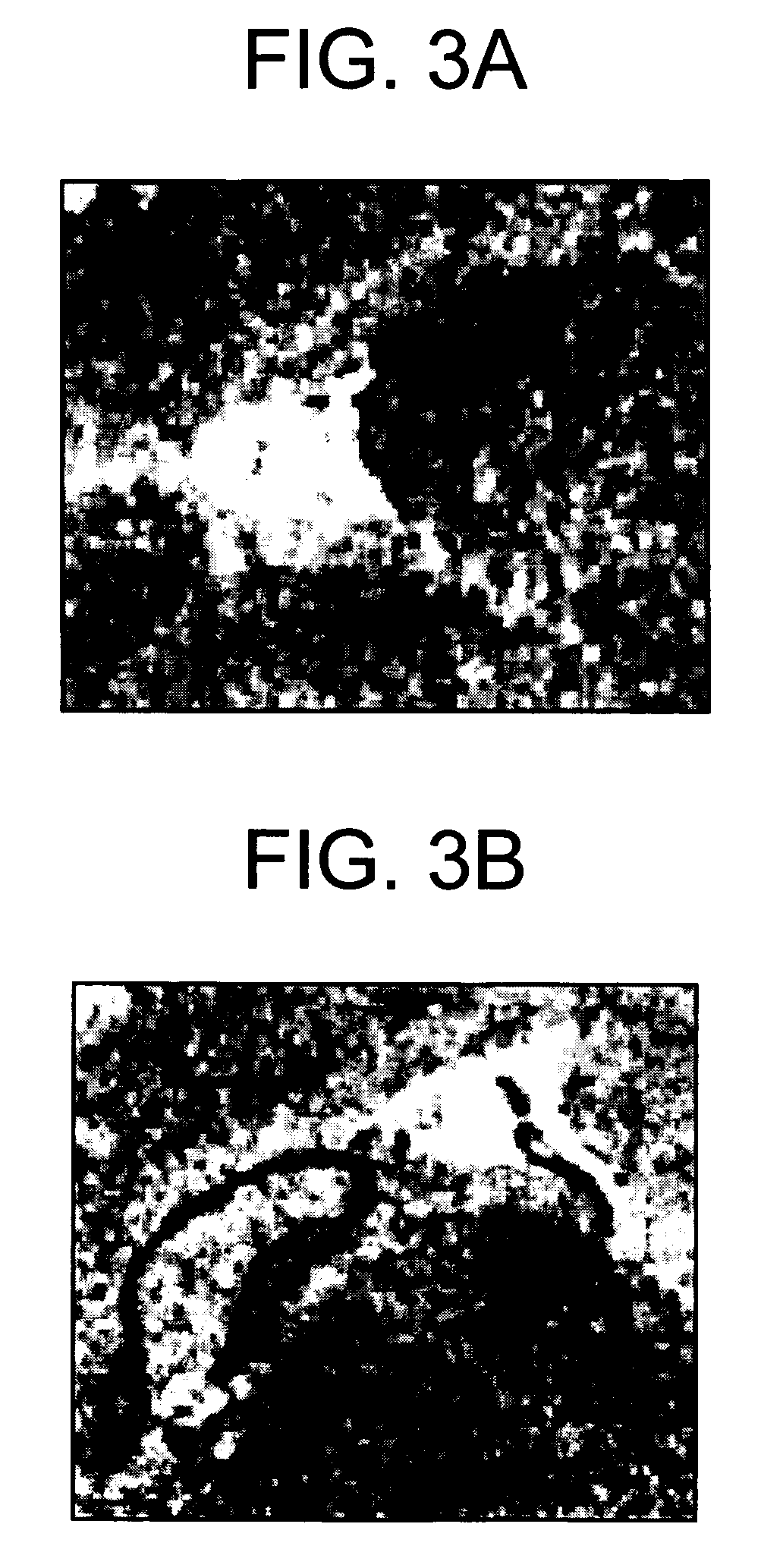Treatment of disease or injury of the nervous system with FTY720
a nerve system and fty720 technology, applied in the field of nerve system disease or injury treatment with fty720, can solve the problems of undesired or limited effects, small factors known to affect neurogenesis in vivo, and hinder the grafting of fetal tissue, so as to increase the proliferation of non-embryonic neural stem cells, increase the in situ activity nsc, and increase the proliferation of cells
- Summary
- Abstract
- Description
- Claims
- Application Information
AI Technical Summary
Benefits of technology
Problems solved by technology
Method used
Image
Examples
example 1
Neurosphere Cultures
[0118] The anterior lateral wall of the lateral ventricle of 5-6 week old mice was enzymatically dissociated at 37° C. for 20 min in 0.8 mg / ml hyaluronidase and 0.5 mg / ml trypsin in DMEM containing 4.5 mg / ml glucose and 80 units / ml DNase. The cells were gently triturated and mixed with three volumes of Neurosphere medium (DMEM / F12, B27 supplement, 125 mM HEPES Ph 7.4) containing 20 ng / ml EGF (unless otherwise stated), 100 units / ml penicillin, and 100 μg / ml streptomycin. After passing through a 70 μm strainer, the cells were pelleted at 160×g for 5 min. The supernatant was subsequently removed and the cells resuspended in Neurosphere medium supplemented as above, plated out in culture dishes and incubated at 37° C. Neurosphere cultures were ready to be split approximately 7 days after plating.
[0119] To split the neurosphere cultures, neurospheres were collected by centrifugation at 160×g for 5 min. The conditioned supernatant (conditioned medium) was removed and...
example 2
RT-PCR Analysis
[0120] Neurospheres were prepared from the LVW as stated above. Three days after the first split, the neurospheres were harvested and total RNA was isolated using QIAGEN's RNeasy Mini Kit according to the manufacturer's instructions. LVW and ROB total RNA was prepared in identical fashion to that of neurosphere total RNA. Prior to the RT-PCR, total RNA was DNase (Ambion) treated (1 unit 5 μg total RNA) at 37° C. for 15 min, followed by heat inactivation at 75° C. for 10 min. Invitrogen's One-Step RT-PCR Kit was used to detect the presence of mRNA corresponding to the eight EDG / S1P receptors. Briefly, 12.5 ng of total RNA was used in each reaction, with an annealing temperature of 58° C. To further ensure that genomic contamination of the total RNA did not give rise to false positive results, an identical reaction with Taq polymerase alone was run in parallel with the experimental RT-PCR. The reactions were electrophoresed on a 1.0% agarose gel containing ethidium bro...
example 3
Growing of Cells
[0121] Cells were seeded as suspension cells, at a density of 10,000 cells / well in DMEM / F12 supplemented with 10 nM FTY720 or without FTY720 (control cells). The adherent cells were seeded at a density of 30,000 cells / well on poly-D-lysine in DMEM / F12 supplemented with 1% fetal calf serum (FCS). When the cells had adhered (after 4 hours), the medium was changed to serum-free medium, and 10 nM FTY720, was added.
PUM
| Property | Measurement | Unit |
|---|---|---|
| pH | aaaaa | aaaaa |
| volume | aaaaa | aaaaa |
| temperature | aaaaa | aaaaa |
Abstract
Description
Claims
Application Information
 Login to View More
Login to View More - R&D
- Intellectual Property
- Life Sciences
- Materials
- Tech Scout
- Unparalleled Data Quality
- Higher Quality Content
- 60% Fewer Hallucinations
Browse by: Latest US Patents, China's latest patents, Technical Efficacy Thesaurus, Application Domain, Technology Topic, Popular Technical Reports.
© 2025 PatSnap. All rights reserved.Legal|Privacy policy|Modern Slavery Act Transparency Statement|Sitemap|About US| Contact US: help@patsnap.com



